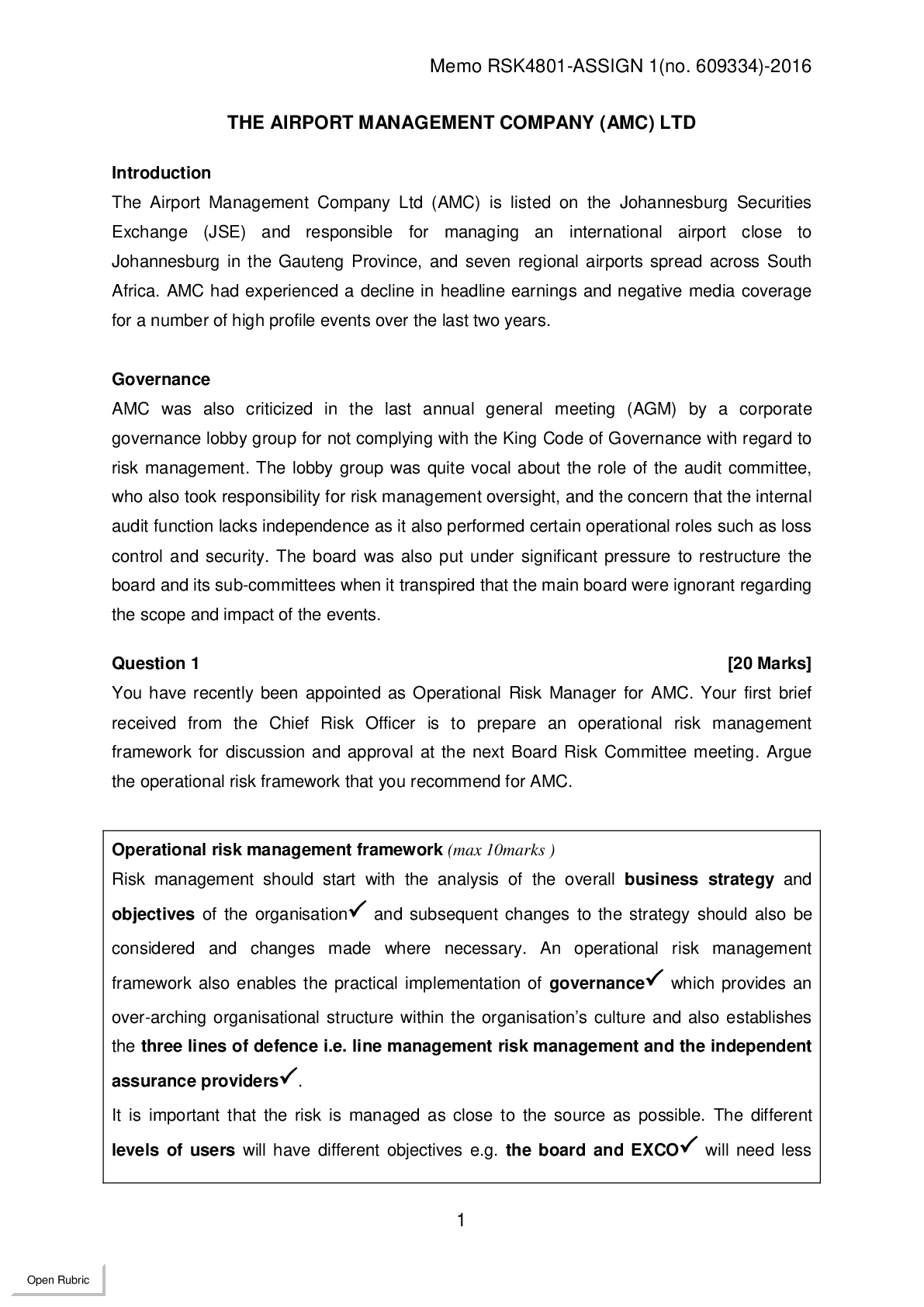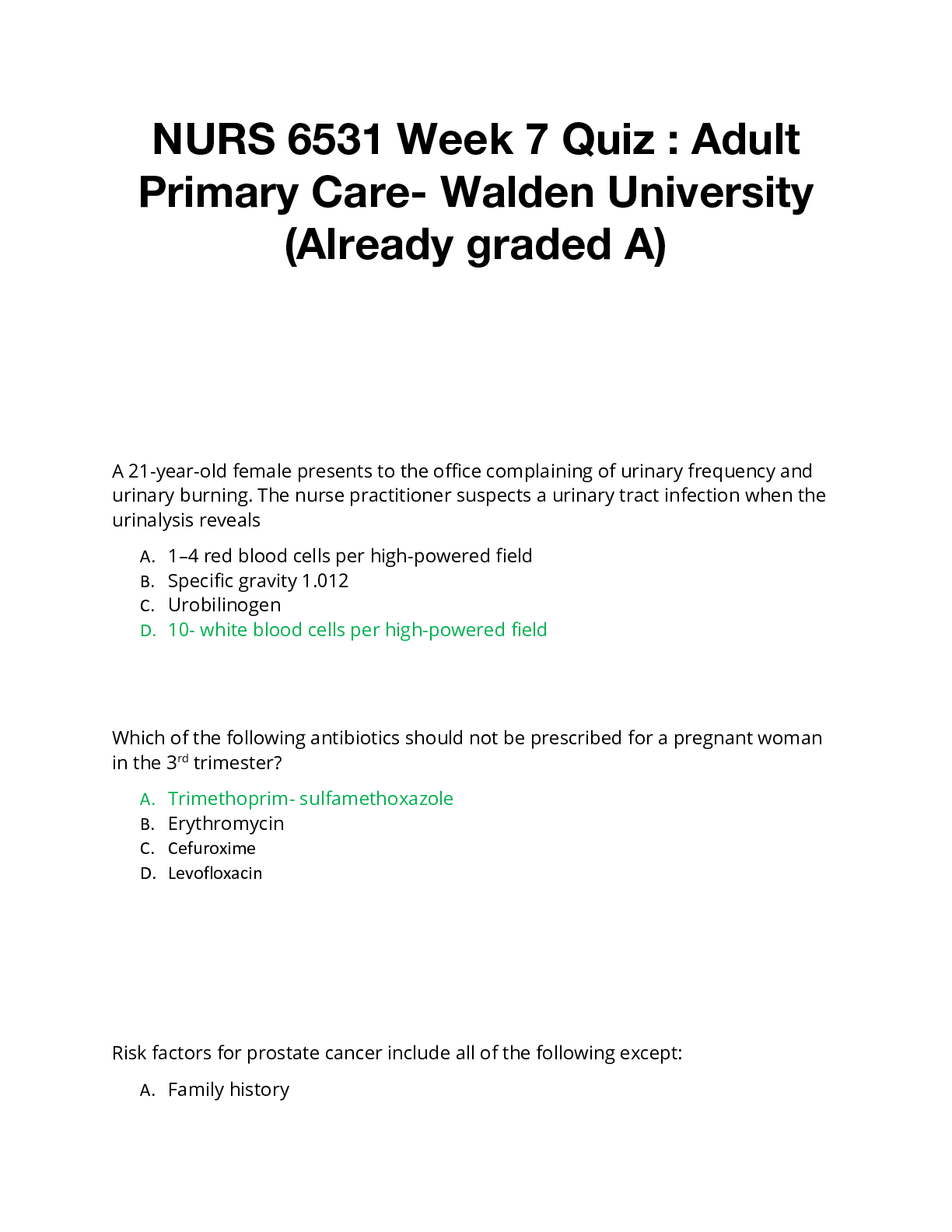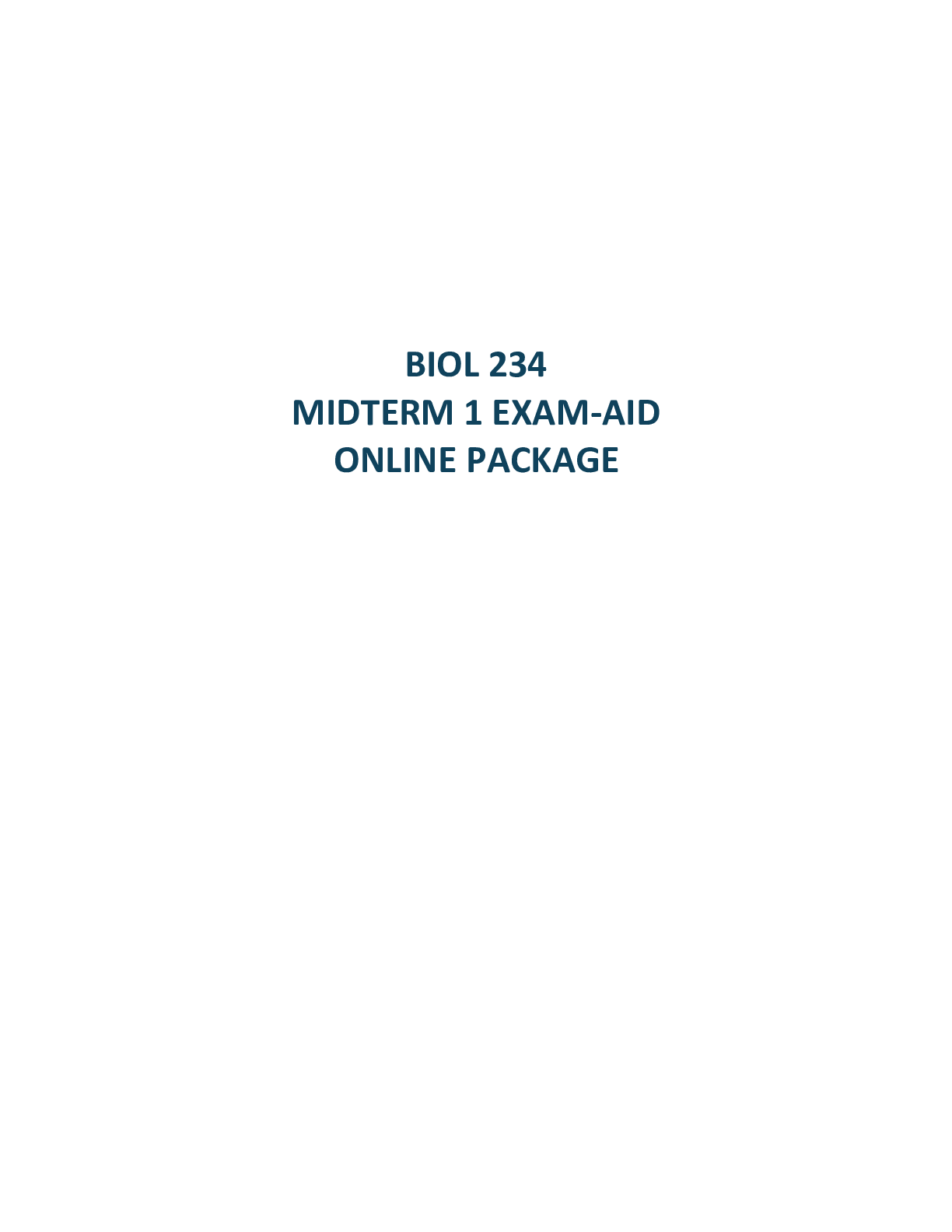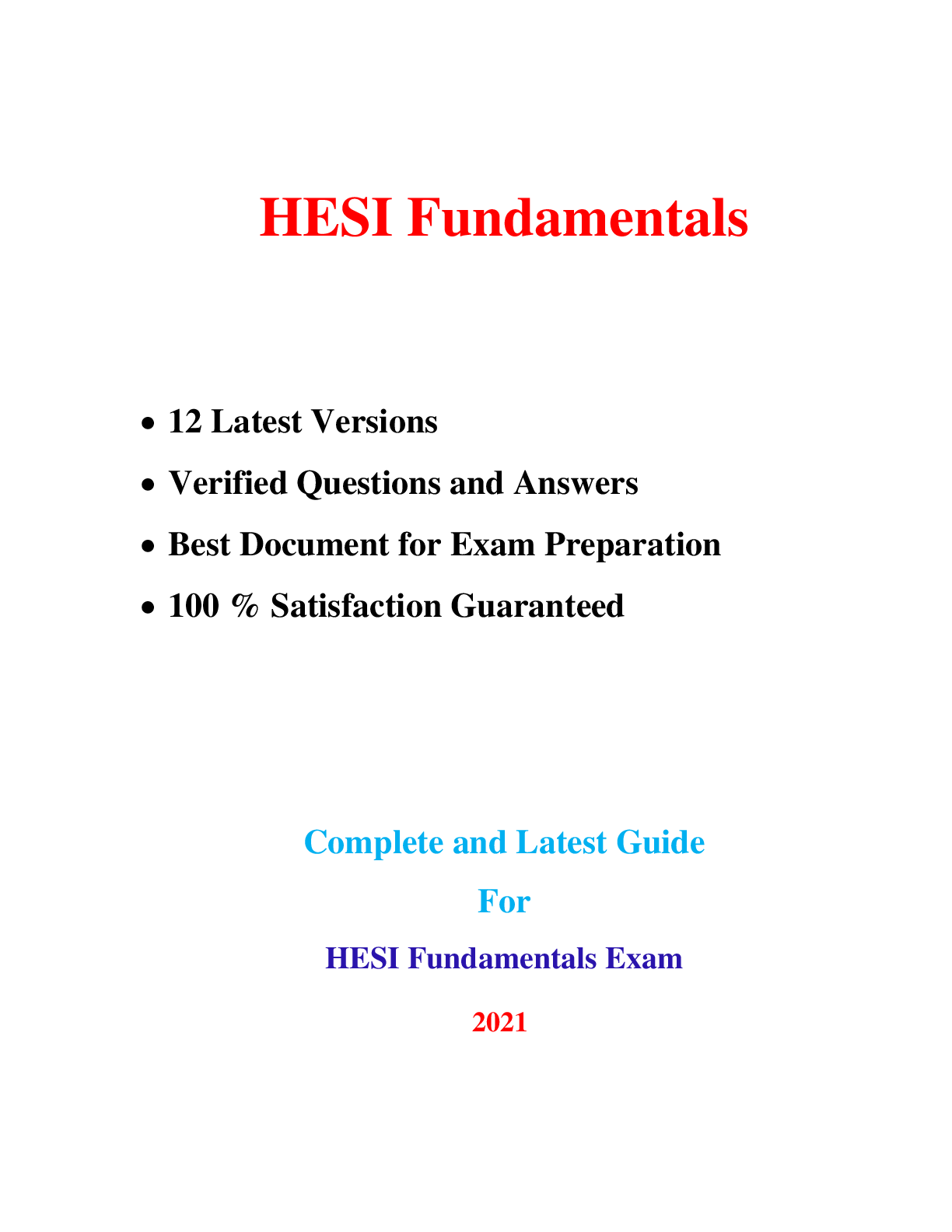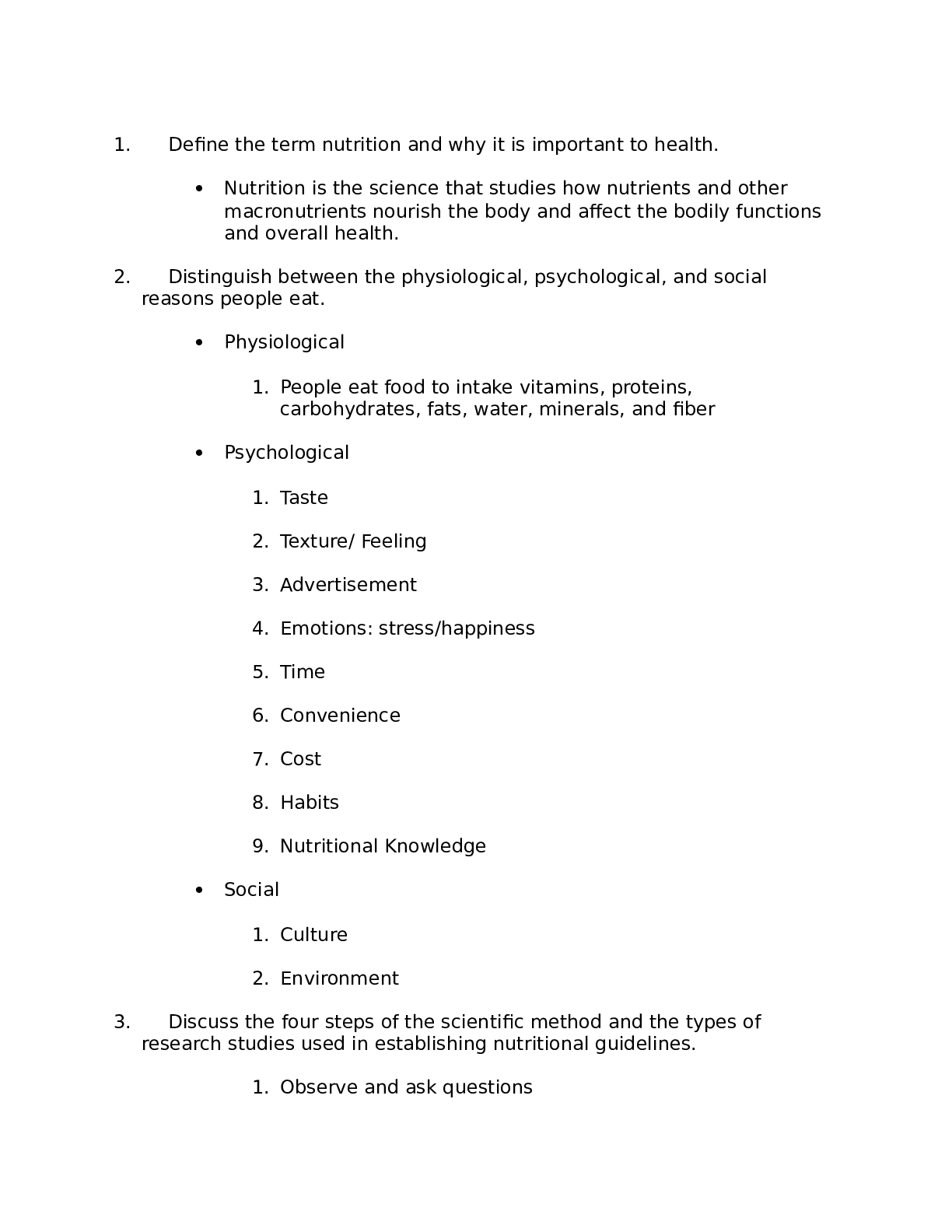*NURSING > QUESTIONS & ANSWERS > Med Surg Musculoskeletal Questions and answers (All)
Med Surg Musculoskeletal Questions and answers
Document Content and Description Below
Which of the following are true about strains and sprains? SATA. A. Strains have more bruising. B. Sprains are an injury to the ligaments. C. 3rd degree strains are considered "mild". D. Hemarthro... sis is a possible complication. E. Most require surgical intervention. Muscles have a vascular supply (more bruising), 3rd degree strains are "severe", most are self-limiting and resolve in 3-6 weeks Which of the following statements said by a patient with a sprain would the nurse question? SATA. A. "For the first 24 hours I should apply heat, then ice after that." B. "I should elevate my leg when I sit down." C. "When applying ice, I should place it directly on my skin." D. "I am so glad that I can have full mobility back in 7 days!" Apply ICE first 48 hours, then alternate between ice and heat NEVER place ice directly on skin. Full mobility should return in 3-6 weeks Which of the following statements about dislocations is correct? A. Dislocations are ortho emergencies! B. A pinky is the most common dislocation site. C. Only open reduction requires the use of anesthesia. D. Future dislocations are far less likely, because the joint has grown stronger. A 54 year old accountant presents to an urgent care complaining of pain in her hand. Which of the following statements said by a nurse needs to be corrected? A. "Let's do a Phalen's test. If you're negative, then you may have carpal tunnel." B. "If this is carpal tunnel, we can give you a steroid injection for short term relief" C. "This could be due to repetitive motion for long periods of time, such as typing." D. "We need to figure out what is causing this before we intervene" Which of the following patients are at risk for rotator cuff injury? SATA. A. A 26 year old that competes in competitive gymnastics. B. An 65 year old accountant. C. A 16 year old that constantly falls off his skateboard. D. A 30 year old that eats only fast food. A 45 year old woman comes to your clinic with a rotator cuff injury. Which of the following treatments could be included in her care? SATA. A. Ibuprofen B. Closed reduction C. Corticosteroids D. Strict immobilization for 3-6 weeks Your 16-year-old neighbor comes to you with a question, knowing that you are a nurse. She asks "I hurt my knee in my basketball game a few hours ago. It keeps popping and it really hurts. What should I do?" You reply saying.... A. "Elevate your knee and ice it. If it still hurts in 2 days, go see your doctor." B. "Go see your doctor as soon as possible." C. "You probably fractured your knee. Let me put on a cast for you!" D. "Try doing some stretches before you work out tomorrow. That should help." What type of fracture is incomplete, with one side being fractured and the other side bent? A. Avulsion fracture B. Comminuted fracture C. Displaced fracture D. Greenstick fracture E. Oblique fracture Which of the following are true about the stages of bone healing? SATA. A. A fracture hematoma will form within 24 hours. B. The callus is the new basis for a bone. C. The fracture can still be viewed on x-ray during ossification. D. The cast can be removed with granulation of tissue. E. Consolidation can occur for up to a year. A new med-surg nurse is discussing reduction procedures. Which of the following statements made by her requires further teaching? A. "Closed reduction carries a higher risk of infection" B. "Open reduction may require the use of continuous passive motion (CPM) machines." C. "The patient should have anesthesia for both closed and open reduction." D. "Closed reduction is a non-surgical option." Which of the following are not purposes of traction? SATA. A. Inducing muscle spasms to encourage re-alignment. B. Immobilizing a joint C. Preventing soft tissue damage D. Reduce a joint before major joint reconstruction E. Treat a pathological joint condition. Your patient had a femoral fracture and has skin traction. Which of the following can you perform in caring for this patient? A. Neurovascular assessments every 2 hours B. Adjusting the 60 lb. weight every 2 hours C. Remove boot every shift for at least 15 minutes. D. Have the patient turn every 2 hours. As a nursing student, you are assigned a patient with skeletal traction. You walk into your patient's room and they say "This traction is killing me, it's so painful! Can you please just remove it for like 10 minutes?" How do you reply? A. "Sure, but let me go get my nurse first since I'm only a student." B. "I can, but I need to get your blood pressure first to make sure you won't have orthostatic hypotension." C. "I'm sorry, we can't remove it unless there's an emergency." D. "The traction needs to fall off on its own. Within 48 hours, your pain should be relieved." While assessing your skeletal traction patient, you notice yellow drainage and swelling at the pin sites. As a super smart nursing student, you know that this could lead to.... A. Diabetes mellitus B. Avulsion fracture C. Turner syndrome D. Osteomyelitis [Show More]
Last updated: 2 years ago
Preview 1 out of 29 pages
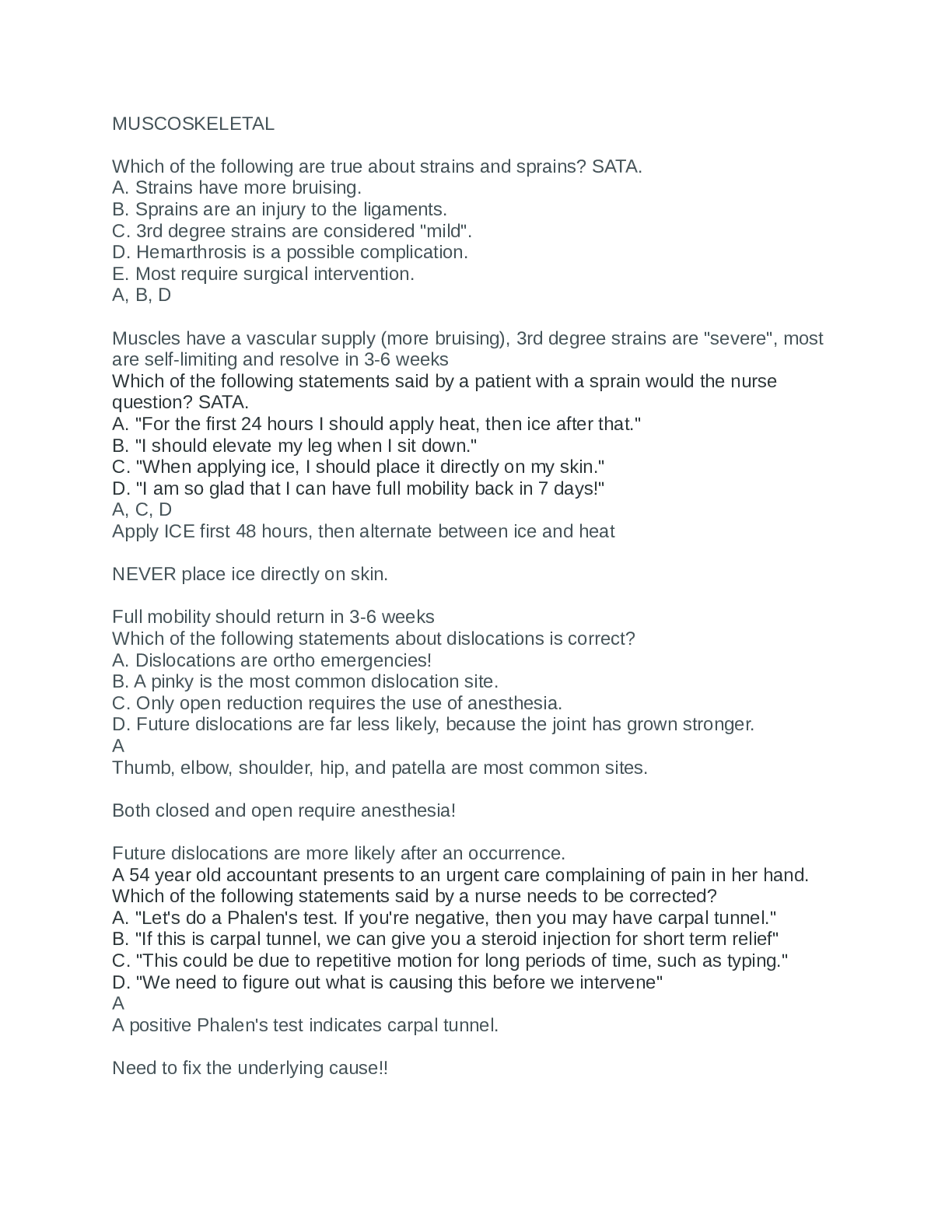
Buy this document to get the full access instantly
Instant Download Access after purchase
Buy NowInstant download
We Accept:

Reviews( 0 )
$9.00
Can't find what you want? Try our AI powered Search
Document information
Connected school, study & course
About the document
Uploaded On
Jul 27, 2022
Number of pages
29
Written in
Additional information
This document has been written for:
Uploaded
Jul 27, 2022
Downloads
0
Views
55

